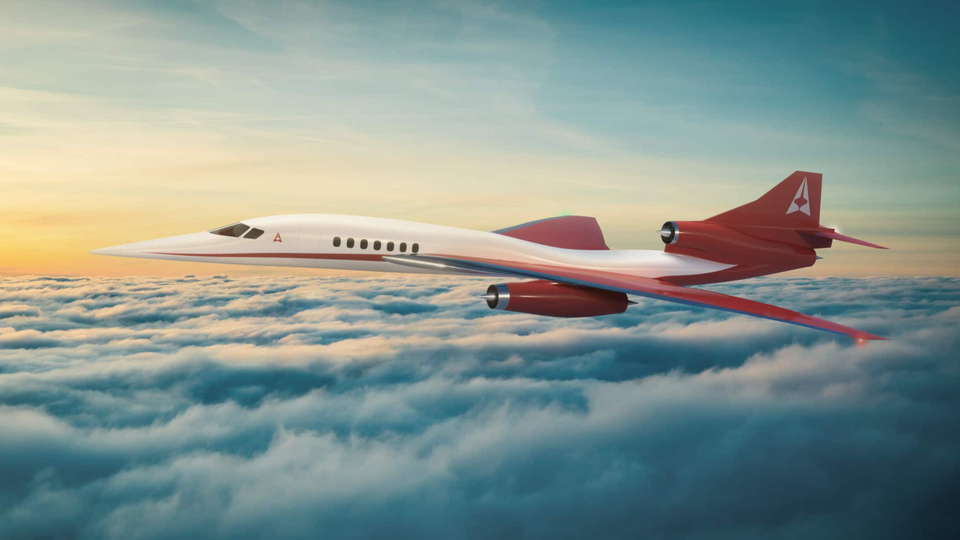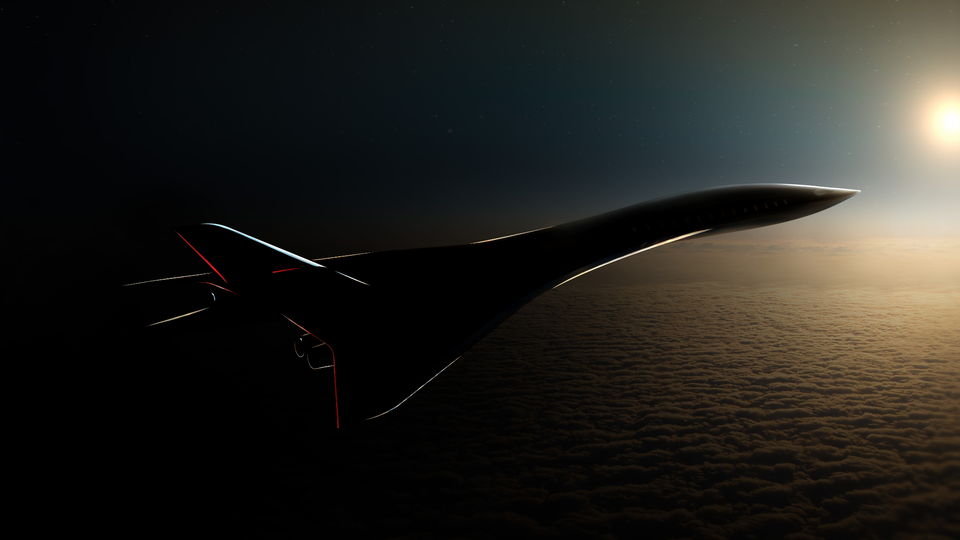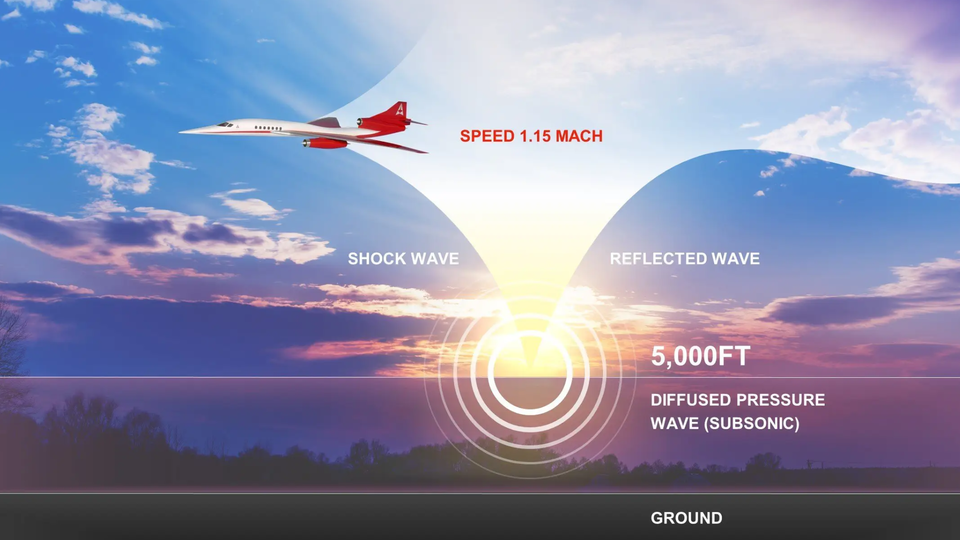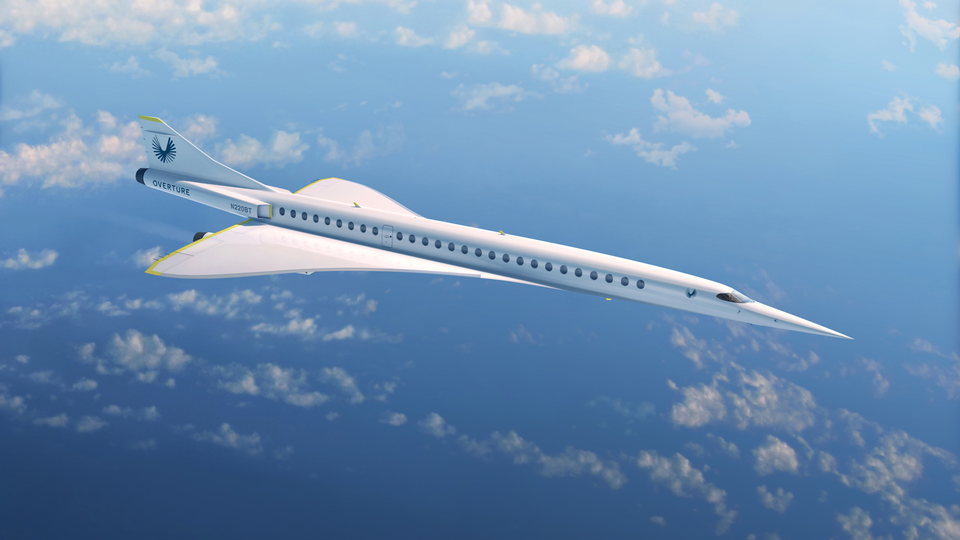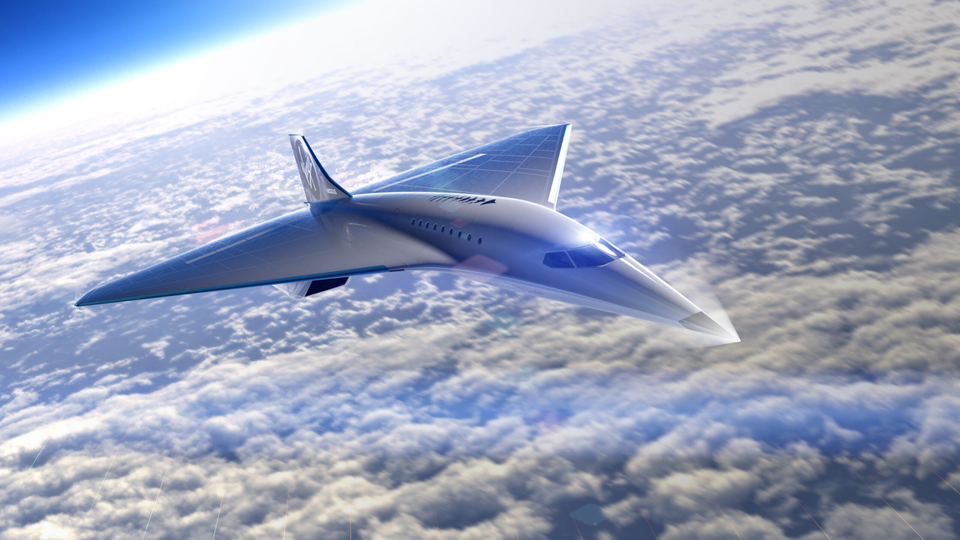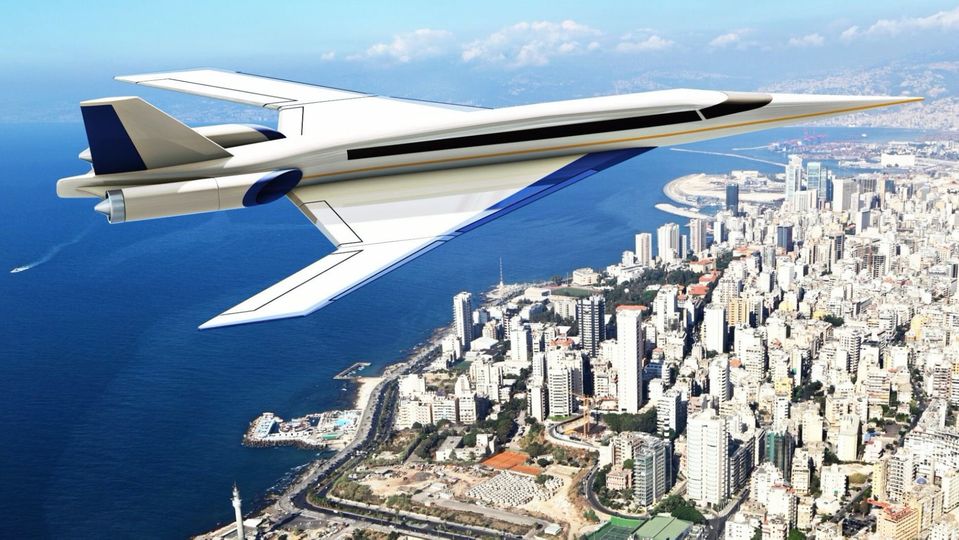Aerion aims high with 'near-hypersonic' 50-passenger AS3 jet
Boomless cruise technology and advanced IT systems would help plot a flight path favouring supersonic speeds.

Fancy darting from Sydney to Singapore in just under three hours? Or making the trans-Atlantic hop between London and New York in closer to two hours, meaning you'd ironically spend more time at the airport than in the air?
Aerion, one of several companies aiming to restart the supersonic era, planted those seeds overnight with plans for a 50-passenger jetliner that would fly at four times the speed of sound and ideally take to the skies before the end of this decade.
Dubbed the AS3, it's faster and larger than the AS2, which will be Aeriod's first supersonic foray and is slated to begin production in 2023.
Whereas the AS2 is a private jet for 8-12 passengers with a speed of Mach 1.4 (1,728km/h) over a range of 8,400-10,000km, the 50-seat AS3 will fly for up to 13,000km at up to Mach 4 – almost 5,000km/h, and just short of the Mach 5 'hypersonic' milestone.
(By comparison, the likes of an international Airbus or Boeing jet will redline around 1,000km/h.)
Aerion sees the AS3 as a commercial jet with stronger appeal to airlines keen not to miss out on a slice of the supersonic market, even if that's a small but moneyed one of corporate travellers, luxury leisure passengers and other movers and shakers who want to spend less time shuttling around in the skies.
"At Aerion, our vision is to build a future where humanity can travel between any two points on our planet within three hours," said Aerion's Chairman, President & CEO, Tom Vice.
"The AS3 forms the next step in our long-term technology roadmap and will bring Aerion's high Mach flight capability to a broader audience; we look forward to sharing more on our design later this year."
Aerion is working with General Electric to design a new engine and won backing from Boeing two years ago.
Earlier this year Aerion expanded its ongoing partnership with NASA’s Langley Research Center, with the intention of accelerating the realization of commercial high-speed flight and faster point- to-point travel, specifically studying commercial flight in the Mach 3-5 range.
Crucial to the success of post-Concorde supersonic flight will be reducing the sonic boom, and Aerion claims it has developed 'boomless cruise' technology where the boom refracts off a denser, lower layer of air, never reaching the ground.
"High-fidelity weather models will be coupled into the Aerion’s Boomless Cruise technology to compute an optimised flight plan" favouring supersonic speeds.
Vice said Aerion is focused on speeds around Mach 4.3 for the AS3 because of heating, shock waves and other tricky engineering issues that emerge at Mach 5 and above.
However, Aerion doesn't expect to have the supersonic skies to itself.
Boom Technologies plans a US$200 million supersonic jet that can carry 65 to 85 passengers at more than twice the speed of sound, which it said will enter service by 2030. The company has orders for 30 jets from Japan Airlines and Virgin Group.
Virgin Galactic surprised some investors last year with plans for a Mach 3 aircraft seating as many as 19 people, an interim step on the company’s path toward eventual hypersonic point-to-point travel.
Virgin’s supersonic project is being assisted by Rolls-Royce, which is also working with Boom on supersonic engine technologies.
A fourth player, Boston-based Spike Aerospace, plans a 12-18-passenger supersonic jet that cruises at Mach 1.6 and has range to cover nonstop flights from London to Hong Kong and Dubai to New York. The company hasn’t offered a timeline for its development, however.
Aerion boss Vice argues that Aerion has an advantage over supersonic competitors when it comes to engine development, pointing to its partnership with GE and its plan to build the first commercial supersonic power plant in more than five decades.
The design is exclusive for Aerion, said Vice, who declined to disclose how much the engine development will cost or how it’s being financed.
"Somebody else wanting to build a supersonic business jet – they're going to have to go find a different engine," Vice said. Aerion "for sure" will be the first new supersonic commercial aircraft to market, he predicted. "We'll get there years ahead of anybody else."
New engines for new jets
Aerion said it scoured the world for an engine, including Russian designs that would meet noise restrictions, fuel-burn requirements and reliability over thousands of hours of high-speed flying. No existing engines fit the bill, though.
Instead, the company turned to GE to build an engine with 20,000 pounds of thrust, special acoustic linings to reduce take-off noise and dual turbo-fans that don’t require fuel-guzzling afterburners.
GE’s Affinity engine will also be the first designed to run on traditional kerosene and synthetic fuel made in part by capturing carbon dioxide from the air. GE spokesman Nick Hurm confirmed the company’s “unique commercial agreement with Aerion” to build the engine, but declined to disclose financial terms.
"I think it's really exciting, frankly, that there are a number of companies now in this space thinking of high-speed flight," Vice said.
"I’m encouraged by that. There are a lot of really great folks who are trying to find different paths. But you’ve got to solve the engine issue."
Additional reporting by Bloomberg.
